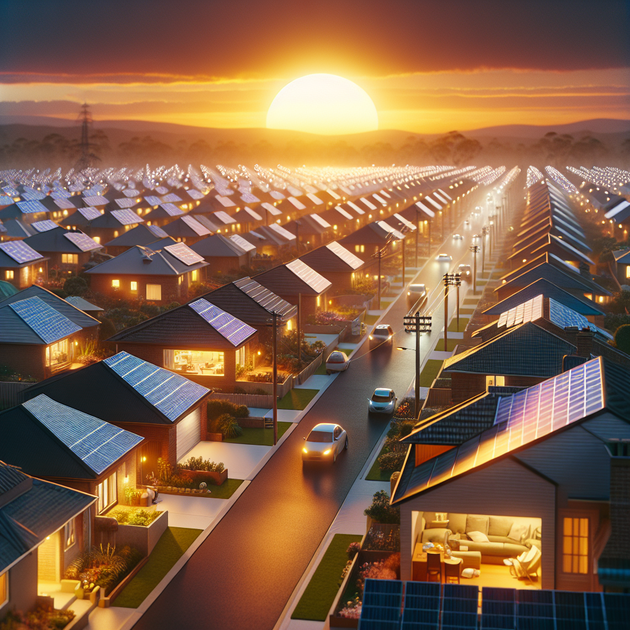Free solar power may sound like a dream, but Australia is planning to make it reality for households—no rooftop panels required. This bold move aims to transform access to clean energy and reduce costs for everyday Australians.
How Will Free Solar Power Work?
Instead of every household needing their own rooftop setup, the government wants to tap into the country’s massive large-scale solar farms. The plan will give each home access to three hours of free electricity generated from these farms every day.
As reported by ABC News, this approach lets everyone benefit from renewables—even renters or people living in apartments.
- No need for personal installation or homeownership
- Uses existing infrastructure and grid upgrades
- Reduces household electricity bills
- Lowers carbon emissions on a national scale
- Makes clean energy accessible to more people
Why Not Just Install Rooftop Panels?
Rooftop solar has been popular in Australia for years. But not every home can install panels—think of apartments or shaded properties. Plus, the upfront costs and ongoing maintenance put it out of reach for many families.
By using centralized generation and smart meters, the new scheme aims to level the playing field. People who were left out before can now enjoy the benefits of green energy.
The Technology Behind It
The backbone of this plan is grid modernization. With advanced software and upgraded infrastructure, utility companies can track how much free power each household uses during the designated window.
What You’ll Need:
- A smart meter (many homes already have these)
- An eligible account with your local utility company
- No need for property modifications or extra hardware
Similar programs have emerged elsewhere as utilities look for ways to manage demand and distribute excess renewable generation when the sun is shining brightest. For example, California has tried “solar sharing” programs that provide credits or reduced rates during sunny periods (see NREL’s summary here).
Who Benefits Most?
Free solar power stands to help lower-income Australians most—the same folks often left out by traditional rooftop schemes. Renters don’t need their landlord’s approval; apartment dwellers aren’t limited by roof space.
This program could also reduce strain on the grid by encouraging people to use more electricity when renewables are abundant.
Potential Challenges:
- Ensuring rural and remote communities can access the program equally.
- Coordinating grid upgrades so everyone can participate.
- Balancing supply during cloudy weather or at night.
A Short Story from Suburbia
Mia lives in a small Melbourne apartment with her two kids. Her rent keeps her from making big changes at home—even if she wants to go green or save money on bills. When she heard about the new free solar power initiative on her local radio station, she felt hopeful for the first time in years.
If this plan goes ahead as promised, Mia could run her washing machine and cook dinner every evening without worrying about soaring electric bills—no negotiations with her landlord required.
The Big Picture—and What’s Next?
This initiative puts Australia among leaders in creative climate action policy. By making clean energy truly accessible—not just affordable—it takes aim at both household budgets and big-picture carbon goals.
The rollout will depend on partnerships between state governments and utilities across regions like New South Wales and Victoria (more details here from RenewEconomy). If successful, expect other countries to watch closely—and maybe even follow suit.
Key Points Recap:
- No rooftop panels needed: Centralized solar makes access universal.
- Three hours daily: Each eligible household gets a set period of free electricity.
- Smart meters track usage: Ensures fair distribution throughout neighborhoods.
- Saves money & lowers emissions: Both wallet-friendly and planet-friendly.
- Pilot programs coming soon: Early trials expected within major cities first.
Your Thoughts?
If you had three hours of free electricity each day—no strings attached—how would you use it? Would it change your habits at home?
